From identifying hotspots to making the perfect cast, we break down this classic summertime reservoir pattern
The heat of the summer means primetime for bass fishing on ledges, those mystical structures where pro anglers haul in magnificent catches. But what are ledges, and why do they get so much attention from top bass anglers?
Since catching the bass bug at the age of 18, I’ve made an effort to learn all I could about ledge fishing patterns. Today, as a press observer rubbing shoulders with the nation’s top pros, those tactics continue to be a regular subject of conversation. So, let’s get dialed in.
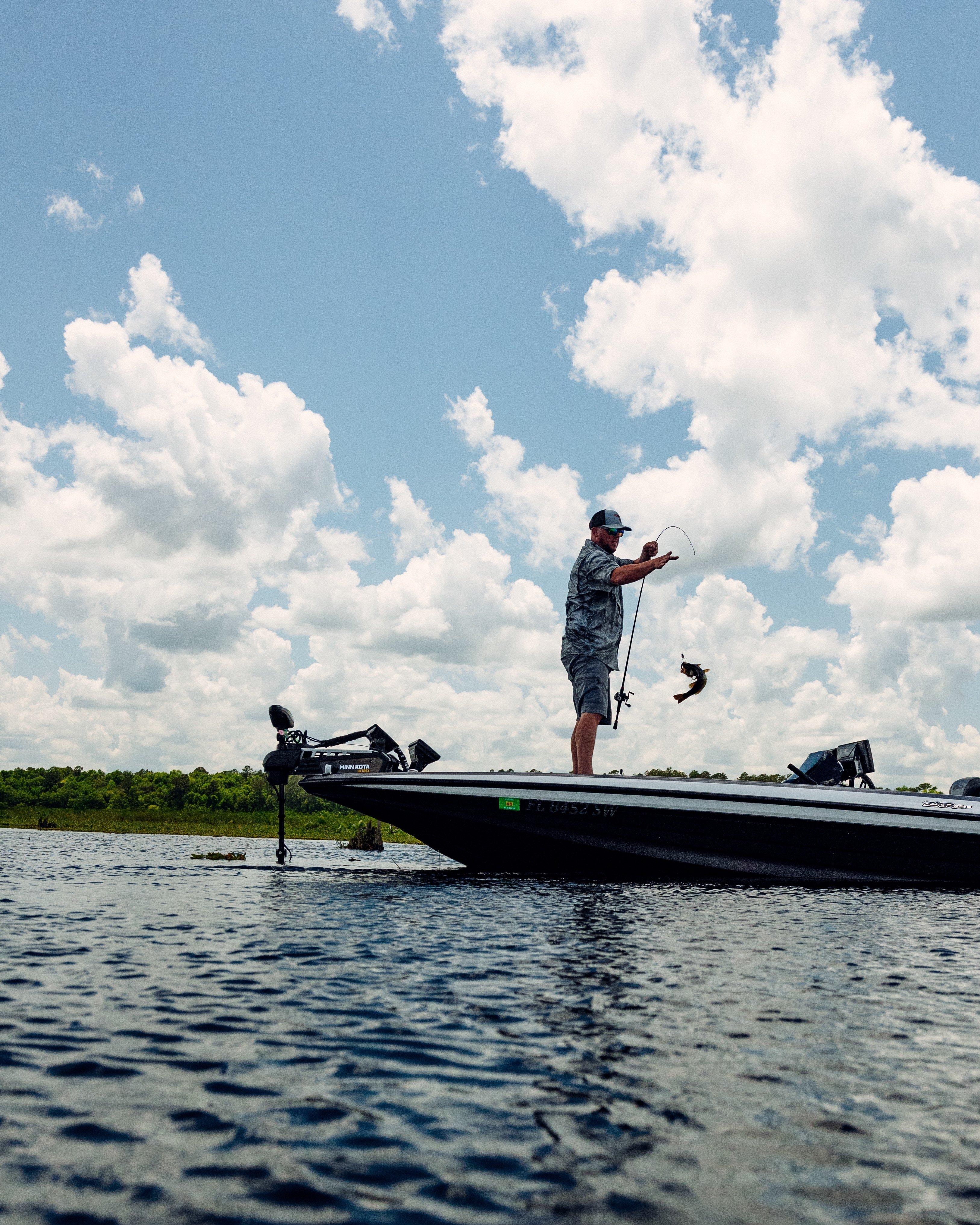
Ledge fishing is at its best in the summer. Image by Millennium Promotions
WHAT A LEDGE REALLY IS
The term “ledge” is short, really, for river ledge. True ledge structures occur almost exclusively in man-made reservoirs. Natural lakes and rivers don’t have ledges unless something occurred to back up or dam a feeder stream.
To understand what a ledge looks like underwater, it helps to envision what the river would’ve looked like prior to impoundment of the reservoir. The low-lying bottoms adjacent to the river bank are now underwater and comprise the shallower flats, bays, and pockets. The edge of the original river channel is still there, and it shows up on a depth finder as a dramatic drop-off.
Just like dry river banks that you can see, most river ledges in lakes are somewhat flat and featureless, especially in lowland reservoirs. They can run for miles on each side of a river channel without much elevation change. In some reservoirs, main river ledges can be 45 deep. In others, they might just be 5 feet deep. Feeder creeks often have their own ledges, too, though they’re smaller than the ledges of the main river body.
The key takeaway is this: river ledges are the edges of the main thoroughfare of a reservoir — the flooded river — and they are constantly influenced by it. More about that in a minute.
Don’t Miss: SUMMERTIME CREEK FISHING FOR WHATEVER WILL BITE
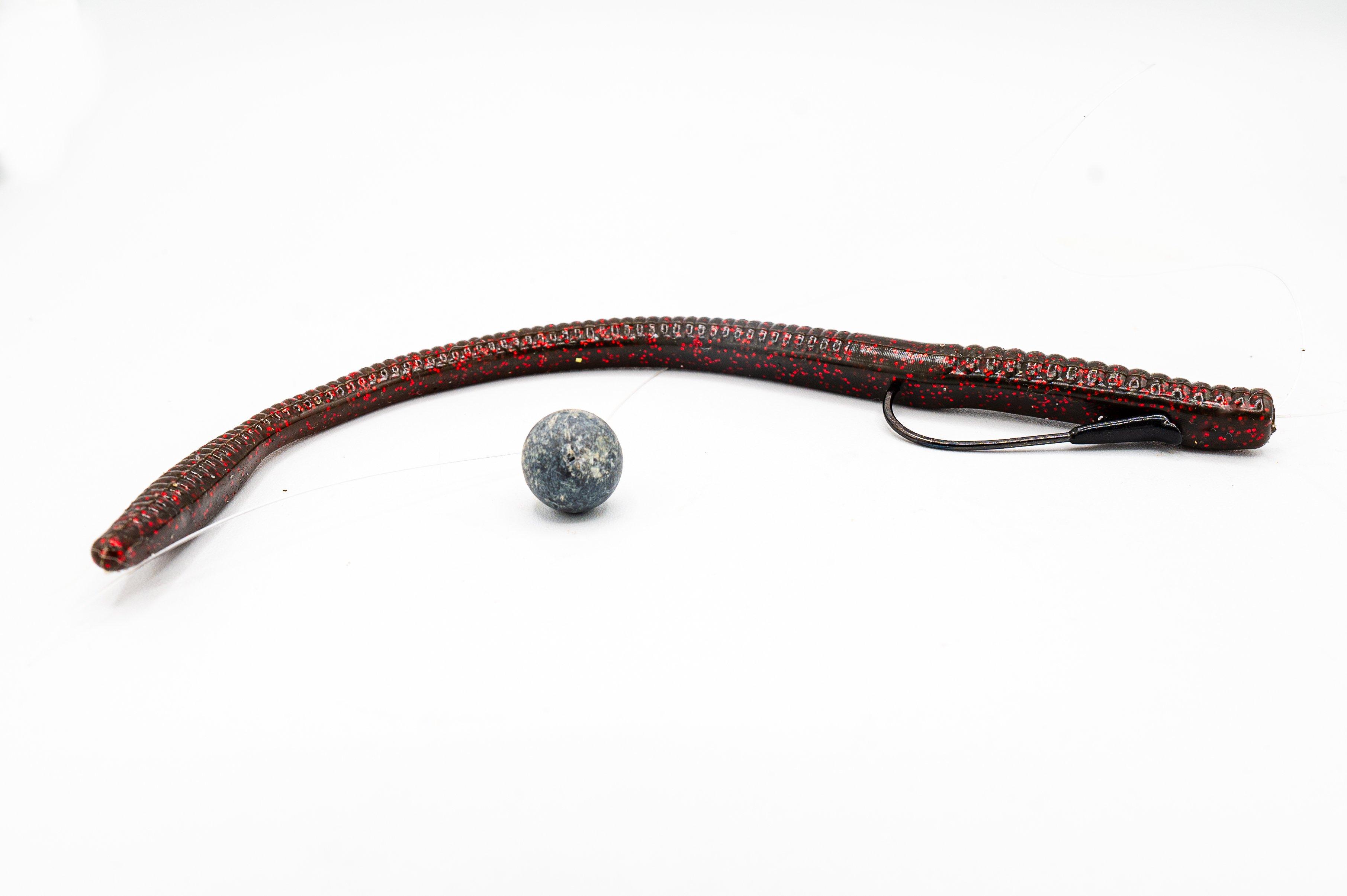
A drop-shot worm is Stetson Blaylock’s go-to lure. Image by Millennium Promotions
BASS LOVE LEDGES
Why do ledges attract bass, especially in summer? Deep water helps, as does the location of most river ledges. This time of year, many bass occupy the vast basin areas of large reservoirs. Deep water is coolest, and main lake areas offer seclusion to bass through the onslaught of jet skis and pleasure boaters. Shad and herring, the main forage of most reservoir bass, inhabit these same basin areas, where they find ample food in the form of plankton. Finally, ledges offer bass the closest proximity to current, as the rivers beneath the reservoirs continue to flow.
It’s impossible to overemphasize the importance of current to bass when the water is warm. Current brings increased oxygen and food supply during an otherwise tough time. Fish will seek out the slightest changes in flow, and veteran reservoir anglers frequently find that the fishing during times of power generation — when dams open and current draws through a reservoir — to be drastically better than any other time by a wide margin, even when this generation occurs during the hottest part of the day.
Come summer, current is king.
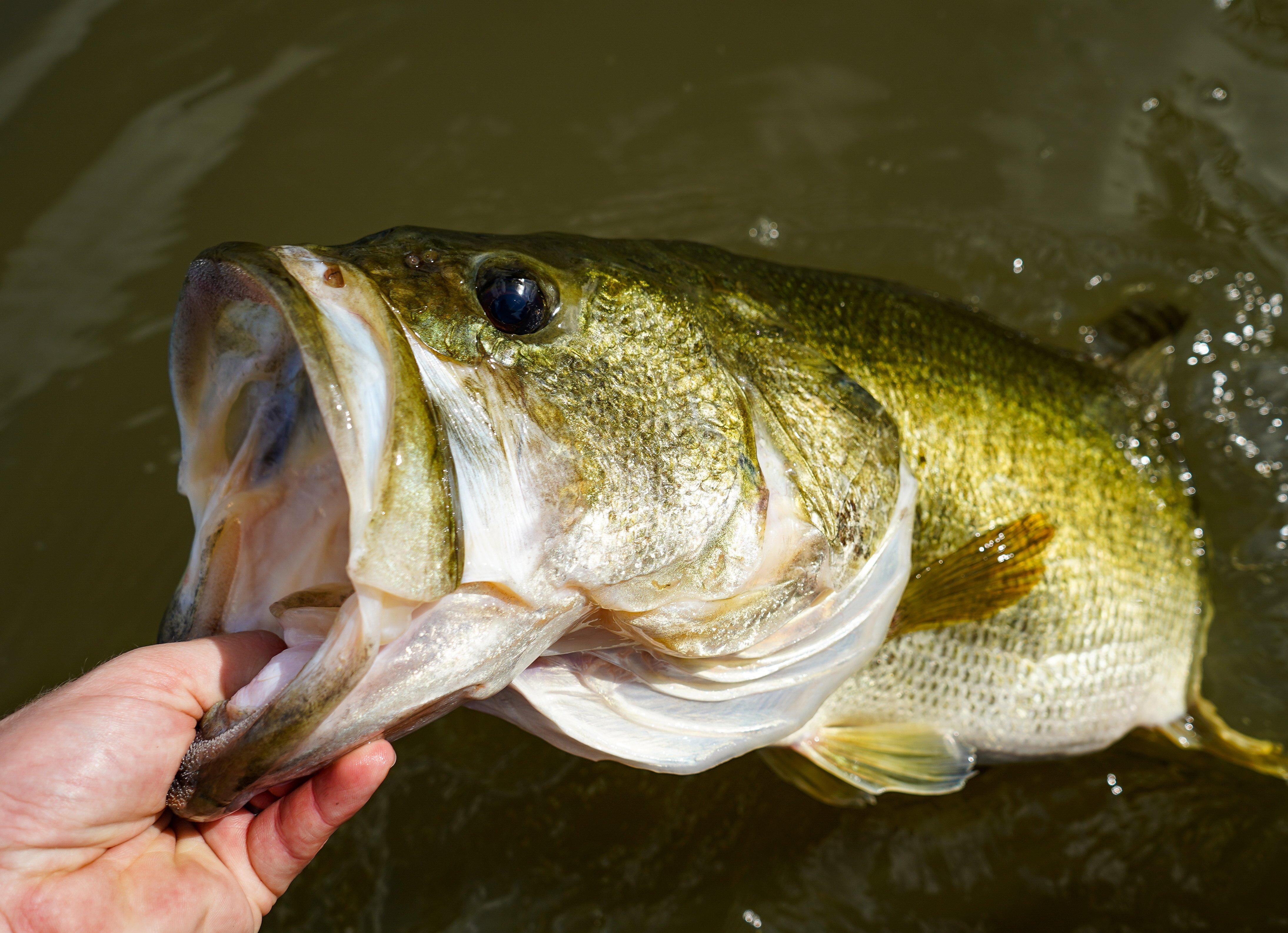
All ledges are not created equal. Image by Maclane Parker
HOW TO FIND THE RIGHT LEDGE
By now, you likely realize how vast ledges can be. In essence, they run the entire length of any reservoir, and across most of the main feeder-streams. So how do you pick where to fish?
Start by determining a comfortable depth. While bass may inhabit ledges in all depths of water in your local reservoir, it may not be feasible to fish for them in the deepest portions of the lake. Also, water color will come into play. In stained or dirty water, ledge bass rarely venture deeper than 15 feet. Ultra-clear water, conversely, may require bass to always stay deep.
Gauge your starting point by looking for other fishy spots. When targeting deep timber and docks, where do you get the most bites? If it’s, say, 10-15 feet deep, investigate ledges at this depth. Deep-water bass commonly inhabit similar zones throughout a reservoir.
Flat, featureless ledges attract little. Spend some time graphing the structures, looking for irregularities or fish-holding cover. Bends in the river channel are good starting spots, and depth changes are critical. The presence of brush helps, and mussel bars or “hard spots” can be a homerun. Big, obvious changes aren’t necessary to hold bass. Lastly, look for fish themselves on your depthfinder, both gamefish and bait.
Don’t Miss: MARK DANIELS JR.: DESTINED TO FISH
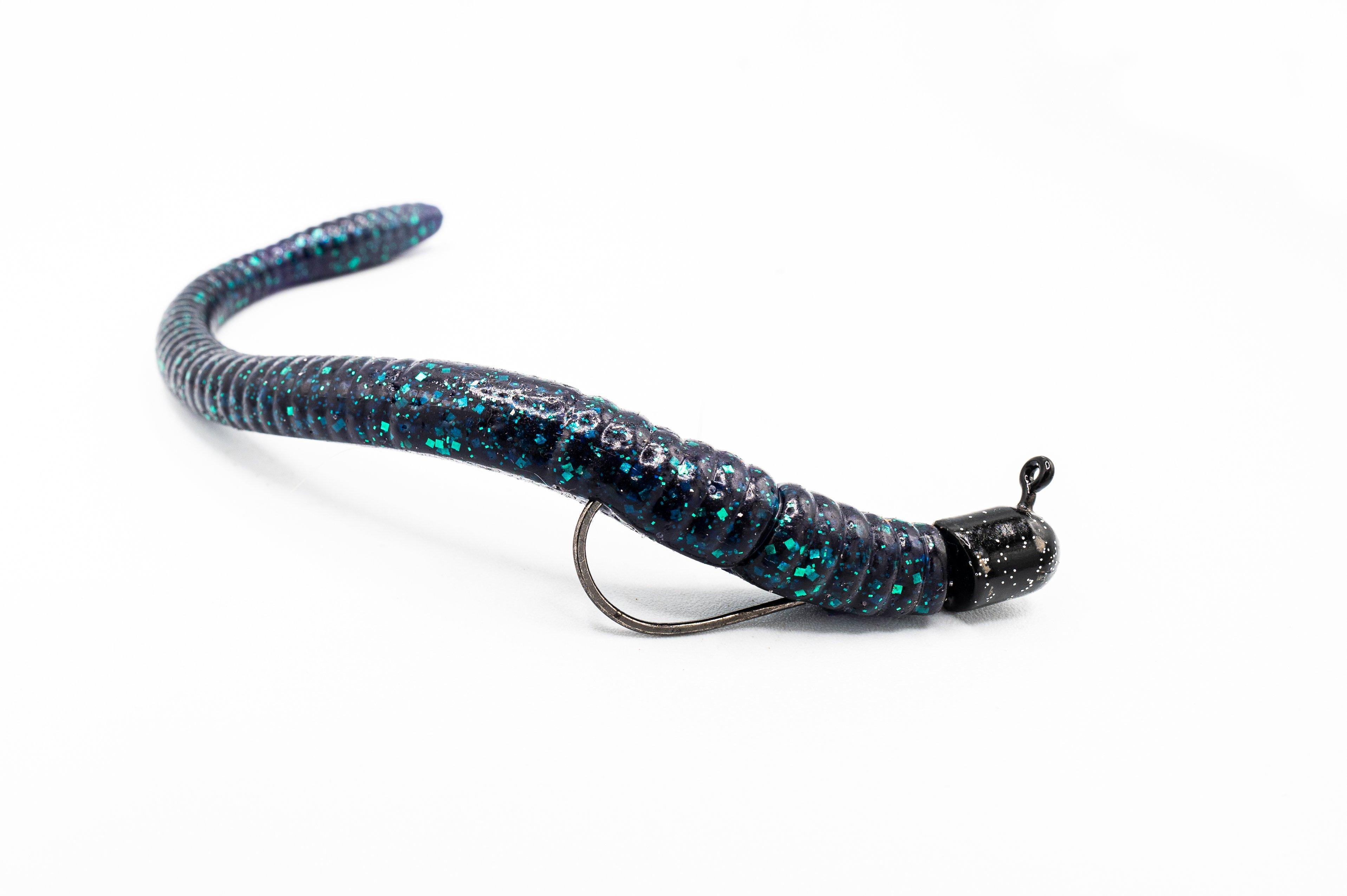
A magnum-sized worm on a Shakey Head is the choice of Mark Daniels, Jr. Image by Millennium Promotions
DOWN TO BUSINESS
After studying the structure and determining the best angle to attack, start with lures that get lots of bites. It’s important not to rule out any bass in your initial search; we just want to identify a productive area and depth to expand our search.
I turned to three Realtree pro anglers for lure suggestions, as they’re out there on the ledges daily, fine-tuning today’s best offerings.
Small swimbaits are deadly ledge fishing lures. Paired with a ½-ounce jighead, ledge fishing expert Mark Rose relies on a Strike King Rage Swimmer just under 4inches long to get the job done. Fished on a spinning rod, the lure casts far and easily covers the entire water column.
Elite Series pro Stetson Blaylock picks a drop-shot with a Yum Sharp Shooter worm, insisting it gets bites from all-sized fish. “The biggest bass usually bite first,” mentioned the Arkansas pro.
Mark Daniels, Jr (recently featured in a Be Real documentary) goes old-school, relying on a big plastic worm on a shakey head jig. “Shallow or deep, clear or dirty, it always gets bit,” MDJ said.
Obviously, plastic baits rule the roost out on the ledges, allowing anglers to customize their delivery options in terms of jigs and rigs. But once the bass are found and a few caught, the most important principle of ledge fishing applies.
REPEAT THE CAST
It’s shocking how certain, exact casts must be made to trigger ledge bass to strike. Again, current likely plays a role. Bass positioned on river ledges grow accustomed to their food coming from a certain direction. In addition, they hold in areas offering relief from current. For that reason, your lure must trickle down perfectly.
Always cast up-current and bring a bait down. Where possible, utilize a GPS to ensure your angles and casts are wide-ranging for starters, then duplicates once a fish is triggered. Often, just having a little more line out, or dragging a worm with less resistance, makes a difference in getting bites.
You must duplicate the cast. Then, once the bass quit biting, switch lures and duplicate the cast again. No luck? Change your angle slightly.
Trolling motors with anchor mechanisms keep things precise, but don’t be afraid to trust your instincts as much as technology. Sometimes switching things up fires up the school. Once a bass is caught, get back in as fast as possible. Followers often bite before your worm touches down.
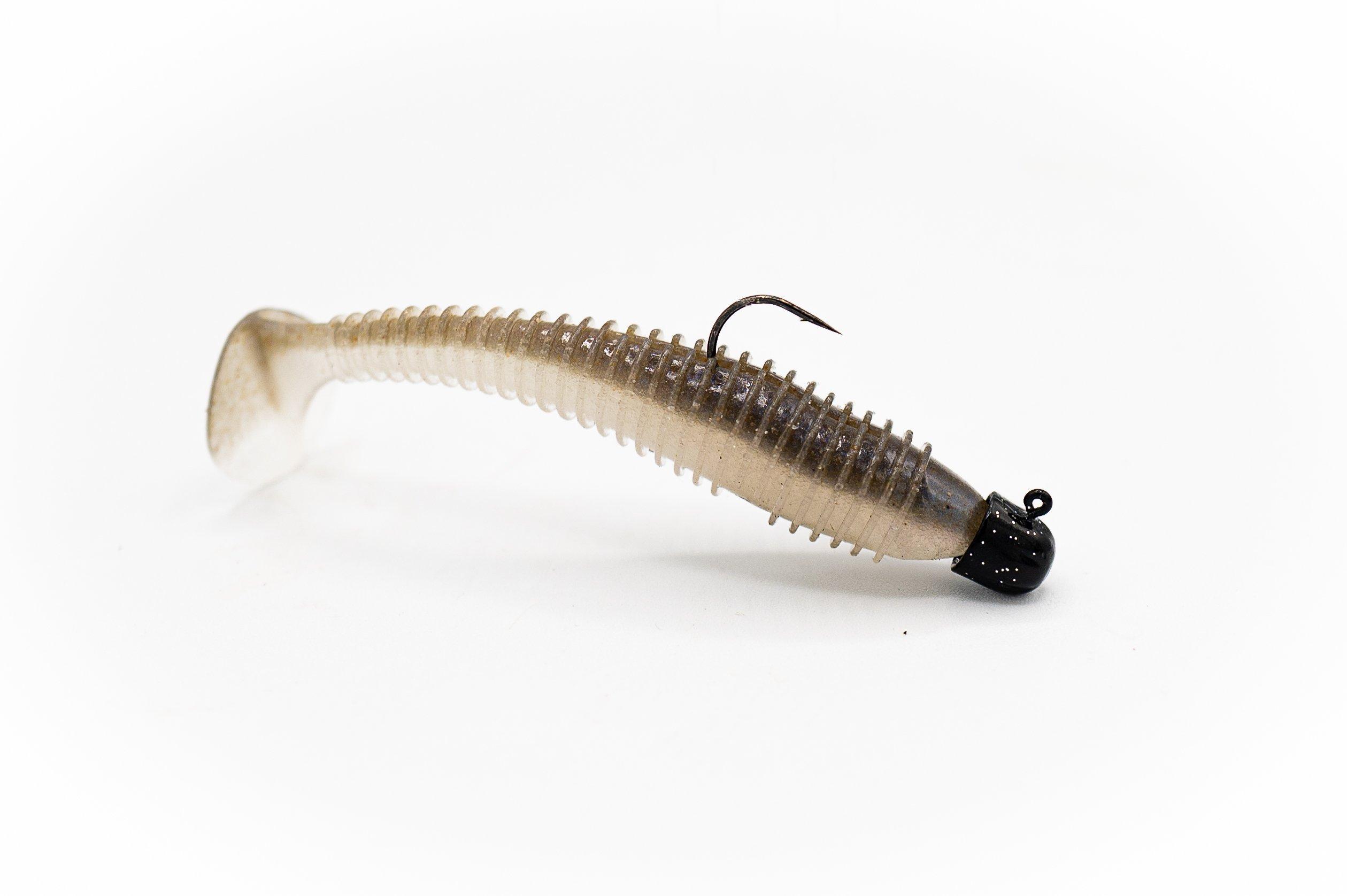
A finesse swimbait on a jighead is the ledge bait of choice for Mark Rose. Image by Millennium Promotions
Ledge fishing is a feast or famine pursuit. Long periods of monotonous casting are interrupted by flurries of bass action that can be the best of the summer, sometimes. Occasionally, it’s difficult to keep motivated and believe in the pay-off.
But it’s out there, I can attest. An active school of bass on a river ledge can seem limitless, creating a fishing memory of a lifetime. You’ve just got to keep at it, learning as you go.
Don’t Miss: 5 BEST LIVE-BAIT RIGS MADE FOR WALLEYE FISHING










